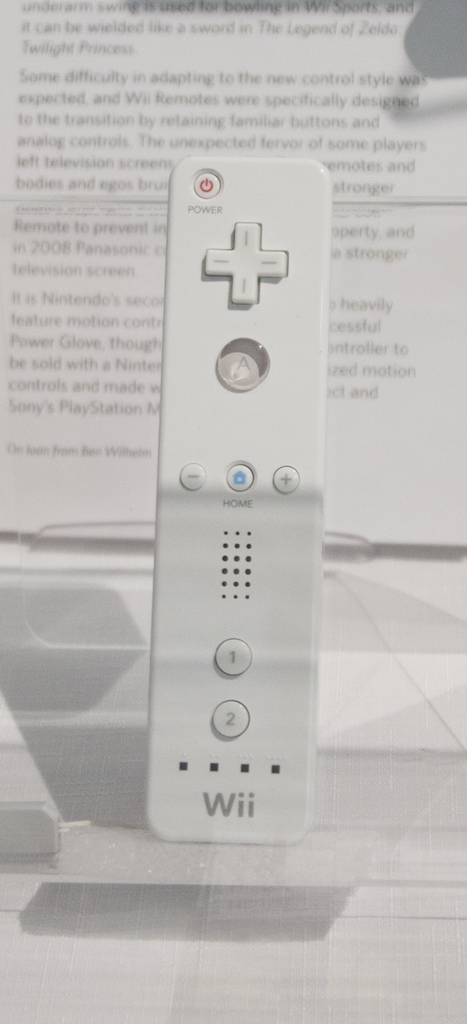Evolution of the Console Controller – Nintendo Wii Remote (2006)
The Wii Remote, better known as the Wiimote, is the primary controller for Nintendo’s Wii console. In addition to conventional inputs, the Wii Remote uses accelerometers and infrared cameras to track the remote’s position and orientation in space. A multitude of motions like waving and pointing can be used with the remote to produce a variety of in-game effects: an underarm swing is used for bowling in Wii Sports, and it can be wielded like a sword in The Legend of Zelda: Twilight Princess.
Some difficulty in adapting to the new control style was expected, and Wii Remotes were specifically designed to the transition by retaining familiar buttons and analog controls. The unexpected fervor of some players left television screens shattered by flying remotes and bodies and egos bruised. Nintendo offered stronger wrist straps and a thick silicone sleeve for the Wii Remote to prevent injury to persons and property, and in 2008 Panasonic considered engineering a stronger television screen.
It is Nintendo’s second console controller to heavily feature motion controls, after 1989’s unsuccessful Power Glove, though it is the first motion controller to be sold with a Nintendo console. It popularized motion controls and made way for Microsoft’s Kinect and Sony’s PlayStation Move.
Up to Modern Era – Back to Flower – Forward to Kinect
On loan from Ben Wilhelm

